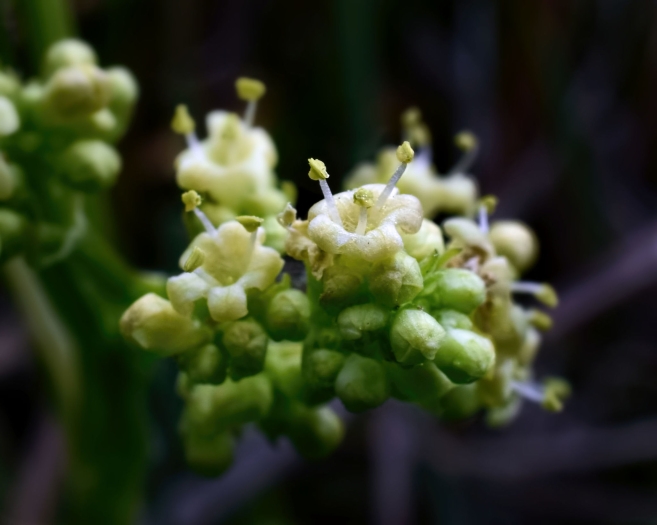Tobacco Root
(Valeriana edulis)
Tobacco Root (Valeriana edulis)
/
/

davecz2
CC BY-SA 4.0
Image By:
davecz2
Recorded By:
Copyright:
CC BY-SA 4.0
Copyright Notice:
Photo by: davecz2 | License Type: CC BY-SA 4.0 | License URL: http://creativecommons.org/licenses/by-sa/4.0/ | Rights Holder: davecz2 | Publisher: iNaturalist | Date Created: 2017-05-15T08:44:25-07:00 |
























Estimated Native Range
Summary
Valeriana edulis, commonly known as tobacco root or edible valerian, is a dioecious perennial herb that thrives in the moist montane meadows and subalpine parklands of western and central North America, particularly at high elevations ranging from 5,249 to 11,483 feet. It typically grows up to 5 feet tall with elongated, sparsely leaved stems. During the summer, it produces small, inconspicuous cream or white flowers that are not particularly showy but are interesting for their structure. The plant’s roots have been historically used as a food source by Native Americans and explorers, such as John Charles Frémont, who noted its strong taste and odor.
Tobacco root is not commonly cultivated in gardens but may be of interest for its historical food use and for naturalizing in wildflower meadows or restoration projects in its native range. It requires consistently moist soil and can tolerate a range of light conditions from full sun to partial shade. While it is not known for being particularly problematic in cultivation, its strong odor may be off-putting to some gardeners. The roots are typically harvested in fall or spring and can be processed by steaming for 24 hours to mitigate the strong odor before being used in soups or ground into flour.CC BY-SA 4.0
Tobacco root is not commonly cultivated in gardens but may be of interest for its historical food use and for naturalizing in wildflower meadows or restoration projects in its native range. It requires consistently moist soil and can tolerate a range of light conditions from full sun to partial shade. While it is not known for being particularly problematic in cultivation, its strong odor may be off-putting to some gardeners. The roots are typically harvested in fall or spring and can be processed by steaming for 24 hours to mitigate the strong odor before being used in soups or ground into flour.CC BY-SA 4.0
Plant Description
- Plant Type: Herb
- Height: 1-3 feet
- Width: 1-2 feet
- Growth Rate: Moderate
- Flower Color: White
- Flowering Season: Spring, Summer, Fall
- Leaf Retention: Deciduous
Growth Requirements
- Sun: Full Sun, Part Shade
- Water: Medium
- Drainage: Medium, Slow
Common Uses
Bee Garden, Edible*Disclaimer: Easyscape's listed plant edibility is for informational use. Always verify the safety and proper identification of any plant before consumption., Low Maintenance
Natural Habitat
Moist montane meadows and subalpine parklands
Other Names
Common Names: Taproot Valerian, Tobacco Root
Scientific Names: , Valeriana edulis,
GBIF Accepted Name: